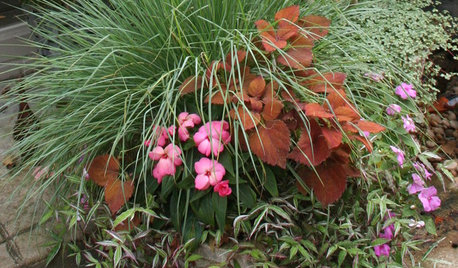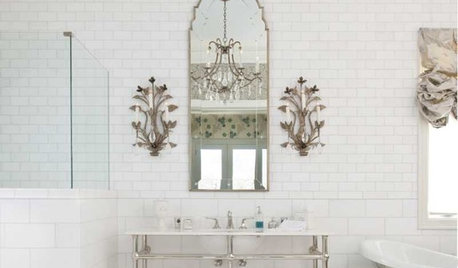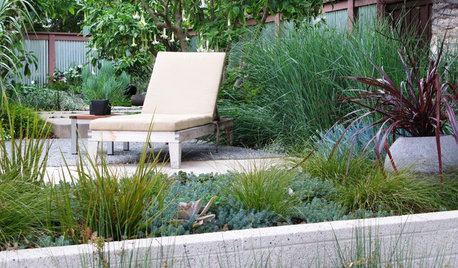Barkless mixes for containers?
SLVTomatoGrower
9 years ago
Related Stories

CONTAINER GARDENSContainer Garden Basics: Mix Textures to Catch the Eye
A mix of textures makes for potted gardens where each plant has a special role to play
Full Story
PLANTING IDEASStretch the Budget, Seasons and Style: Add Conifers to Your Containers
Small, low-maintenance conifers are a boon for mixed containers — and you can transplant them to your garden when they’ve outgrown the pot
Full Story
CONTAINER GARDENSContainer Gardening Basics: The Dirt on Soil
Learn the types of potting soil available and the best mixes to help your containers thrive
Full Story
FARM YOUR YARDHow to Grow Vegetables in Containers
Get glorious vegetables and fruits on your patio with a pro’s guidance — including his personal recipe for potting mix
Full Story
GARDENING GUIDESVegetables and Flowers Mix in Beautiful Edible Gardens
Ornamentals, meet your edible garden mates. We know you'll get along just beautifully
Full Story
DECORATING GUIDESInspired by the Runway: The Art of Mixing Patterns
See how to strut the latest patterns with a fashion-forward mix of of color and scale
Full Story
BATHROOM DESIGNHow to Mix Metal Finishes in the Bathroom
Make a clean break with one-dimensional bathroom finishes by pairing nickel, silver and bronze hardware and fixtures
Full Story
KITCHEN CABINETSKitchen Confidential: 7 Ways to Mix and Match Cabinet Colors
Can't decide on a specific color or stain for your kitchen cabinets? You don't have to choose just one
Full Story
TASTEMAKERSA New Decorating Book Celebrates Expert Style Mixing
Old-world classic, traditional and modern elements harmonize in Stephen Sills' gift-worthy new decorating book
Full Story
LANDSCAPE DESIGNGet More From Your Garden by Mixing Things Up
Consider an eclectic outdoor style with defined hardscapes softened by exuberant, informal plantings
Full Story



calistoga_al ca 15 usda 9
drew51 SE MI Z5b/6a
Related Professionals
Camas Landscape Architects & Landscape Designers · Brooklyn Center Landscape Architects & Landscape Designers · Braintree Landscape Contractors · Corona Landscape Contractors · Fairview Landscape Contractors · Sugar Hill Landscape Contractors · Tacoma Landscape Contractors · Lees Summit Window Contractors · Hawaiian Gardens Window Contractors · Kearns Window Contractors · Asheville Fence Contractors · Lexington Fence Contractors · North Miami Beach Fence Contractors · Tulsa Fence Contractors · Woodinville Fence Contractorstapla (mid-Michigan, USDA z5b-6a)
drew51 SE MI Z5b/6a
tapla (mid-Michigan, USDA z5b-6a)
tapla (mid-Michigan, USDA z5b-6a)
gregbradley
tapla (mid-Michigan, USDA z5b-6a)
zeuspaul
tapla (mid-Michigan, USDA z5b-6a)
david52 Zone 6
seysonn